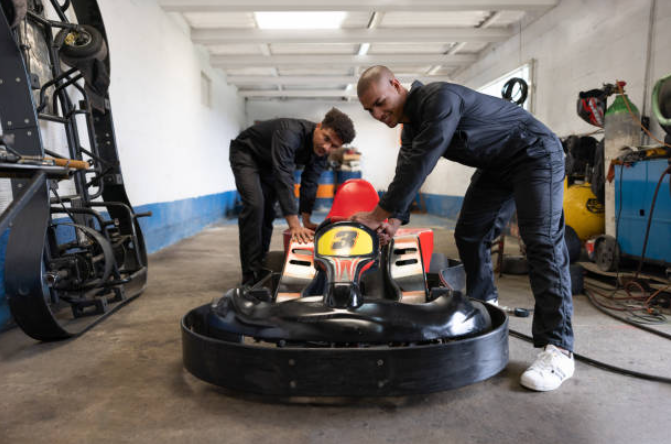The sports and recreation industry is a vital part of the economy in many states. It not only provides jobs and economic development but also contributes to the health and well-being of individuals and communities. In this article, we will explore the various aspects of the sports and recreation industry in the state, including its economic impact, facilities and infrastructure, programs and services, challenges and opportunities, and future prospects.
The economic impact of the sports and recreation industry in the state
The sports and recreation industry is a significant contributor to the economy in the state. It generates revenue through ticket sales, merchandise, sponsorships, and other sources. The industry also creates jobs, both directly and indirectly, for a wide range of occupations, including coaches, trainers, event planners, and facilities managers. In addition, the sports and recreation industry can lead to the development of new businesses and the revitalization of existing ones, particularly in areas with new or renovated facilities.
Facilities and infrastructure in the sports and recreation industry
The sports and recreation industry in the state is supported by a variety of facilities and infrastructure. These may include professional and amateur sports stadiums, arenas, and fields; public and private fitness centers and gyms; outdoor recreation areas such as parks, trails, and playgrounds; and specialized facilities such as ice rinks, swimming pools, and golf courses. Many of these facilities are owned and operated by the government, while others are privately owned. The state may also invest in infrastructure projects, such as the construction of new facilities or the improvement of existing ones, to support the sports and recreation industry.
Programs and services in the sports and recreation industry
The sports and recreation industry in the state offers a wide range of programs and services to meet the needs and interests of individuals and communities. These may include youth and adult sports leagues, fitness classes and workshops, outdoor education and adventure programs, and special events such as concerts and festivals. Many of these programs and services are provided by government agencies, non-profit organizations, and private businesses, and may be funded through fees, grants, and sponsorships.
Challenges and opportunities in the sports and recreation industry
Like any industry, the sports and recreation industry in the state faces a variety of challenges and opportunities. One challenge is the need to balance the interests of different stakeholders, such as the athletes, coaches, fans, and the community. Other challenges include the need to maintain and upgrade facilities, manage financial resources effectively, and ensure the safety and well-being of participants. At the same time, the sports and recreation industry offers many opportunities, such as the ability to promote healthy lifestyles, bring people together, and stimulate economic development.
Future prospects for the sports and recreation industry
The sports and recreation industry in the state is expected to continue to grow and evolve in the future. New technologies and trends, such as virtual and augmented reality, may change the way that sports and recreation are experienced and delivered. In addition, the industry may face new challenges, such as the impact of climate change on outdoor facilities and events. Despite these challenges, the sports and recreation industry is likely to remain an important part of the state’s economy and culture and will continue to offer many benefits to individuals and communities.
FAQs:
1. What is the definition of sports and recreation?
Sports and recreation refer to physical activities and leisure pursuits that are organized or enjoyed for the purpose of maintaining or improving physical fitness, health, and well-being. Sports are typically competitive and involve physical exertion, skill, and strategy, while recreation includes a wider range of activities that may be more casual or leisurely in nature.
2. What are the benefits of sports and recreation?
Sports and recreation can provide numerous benefits to individuals and communities. These may include improved physical and mental health, increased social and community engagement, and economic development. Participating in sports and recreation can also promote teamwork, leadership, and personal growth.
3. What types of facilities and infrastructure support sports and recreation?
Facilities and infrastructure that support sports and recreation include professional and amateur sports stadiums, arenas, and fields; public and private fitness centers and gyms; outdoor recreation areas such as parks, trails, and playgrounds; and specialized facilities such as ice rinks, swimming pools, and golf courses. These facilities may be owned and operated by the government, non-profit organizations, or private businesses.
4. What challenges does the sports and recreation industry face?
The sports and recreation industry faces a number of challenges, including the need to balance the interests of different stakeholders, such as athletes, coaches, fans, and the community; the need to maintain and upgrade facilities; the management of financial resources; and ensuring the safety and well-being of participants. The industry may also be affected by external factors, such as changes in technology, trends, and the impact of climate change.
Conclusion:
The sports and recreation industry plays a vital role in the economy, health, and well-being of individuals and communities in many states. It generates revenue, creates jobs, and supports the development of businesses and facilities. The industry offers a wide range of programs and services to meet the diverse needs and interests of individuals and communities. While it faces challenges and opportunities, the sports and recreation industry is expected to continue to grow and evolve in the future and will remain an important part of the state’s economy and culture.


